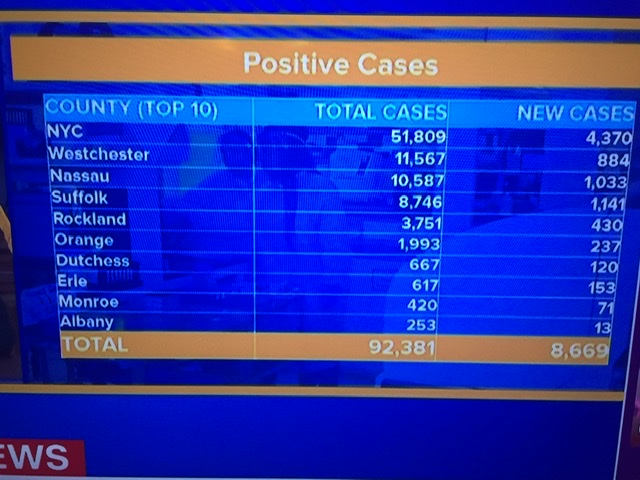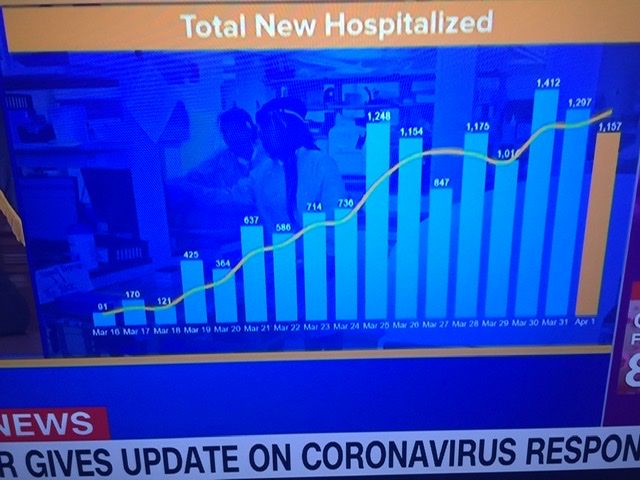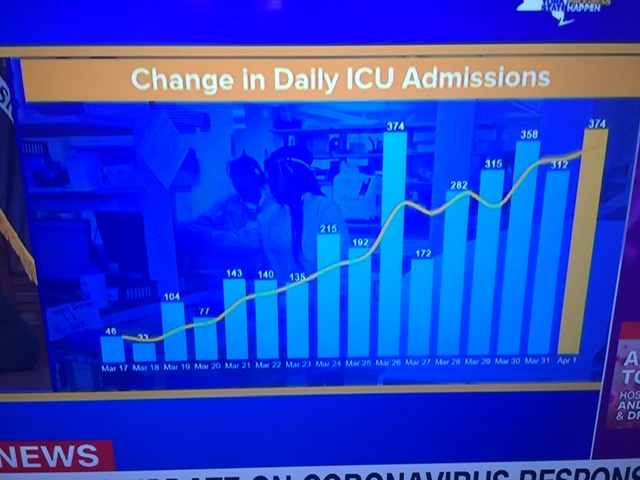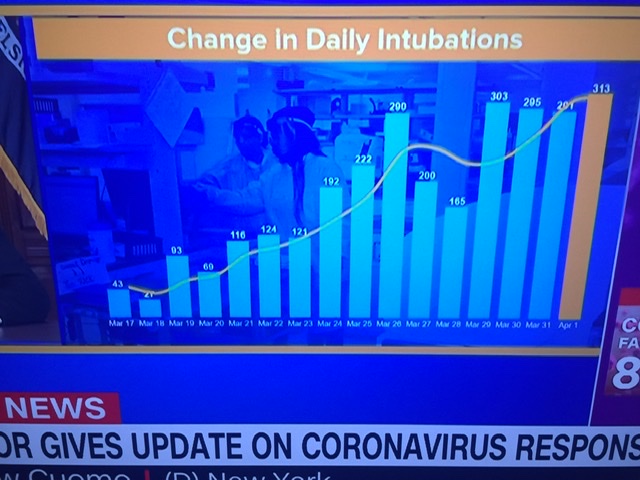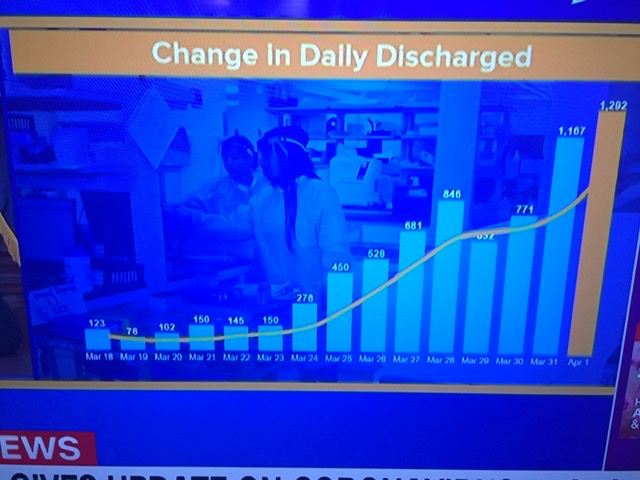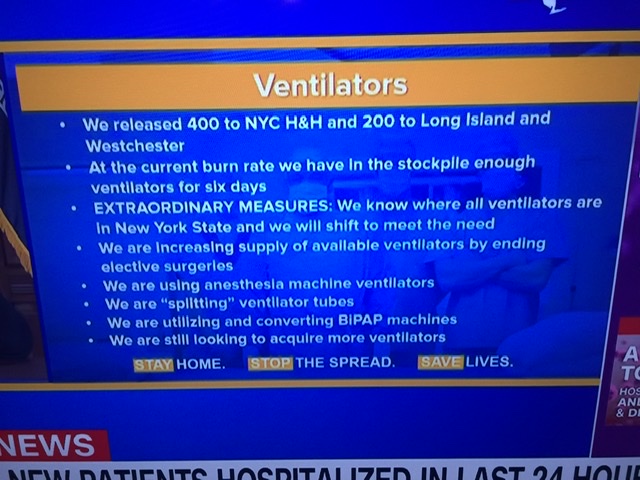April 2nd, New York Coronavirus Report: A Breath of Fresh Air
This article is to present the statistical slides that New York Governor Andrew Cuomo presented this morning, April 2nd. His presentations and governance are breadths of fresh air after watching the Trump narcissistic campaign conferences.
However, I am also going to add my own speculations as to why New York is a central location of various virus infections, which I have heard before. Paul Krugman points out the high population density of New York City, in areas where people actually live and work. While a few people on a boardwalk in Miami or Los Angeles is treated as a single small enclosed room by the TV networks, the sidewalks of New York are dense and enclosed by neighboring buildings. Since New York is a vertical city, everybody has to get into tight elevators several times a day. The major transportation system is the subway, which can be crowded at rush hours, and not easily ventilated. Even if you can afford constant taxis, you are still inclosed with different drivers for each ride. Apartments are small, and many people have roommates, who circulate among an entirely different crowd during the day or night. Eateries, rather than markets, are a predominant form of food consumption, mixing people up again in tight spaces. Many of the city workers and visitors come from the outlying Burroughs, allowing daily spread to them. There were also people from a convention there who spread the virus out of the city.
Today, the high in New York City is 44 degrees F, and there are winds at 20 mph. There is a 30% chance of snow. If there is some validity to the argument that viruses go away when it warms up, and people can open windows to get breaths of fresh air, New York City is still far from that. Certainly high rise offices and many residences don’t have openable windows. Today, the National Academy of Sciences verifies that the virus is airborne, and can even be spread by infected people who show no symptoms, just by breathing and exhaling. This makes stuffy rooms dangerous, and is in contrast to the six foot limit of droplets still endorsed by the Federal guidelines. The initial paper on this has been out for over a week, but largely ignored. Sanjay Gupta on CNN says that this has been known for two months from China. This fact, actually convinced the Governor of Georgia, to put the state on a stay-at-home basis.
Since New York State and City are the leading source of cases and deaths, we concentrate on them. They also illustrate smart strategies in gathering and using medical resources. Here are the statistical slides from today’s report by Governor Cuomo.
To save blog space, we are just going to summarize some slides.
Depending on different models, the apex of the cases curve can be in 7 days, or 21 days, or 30 days, depending on social distancing.
While one curve of the number of cases evolving over time, which peaked at the start of May and came down to a third by June, it then continued on through July and August.
The IHME U. Of Washington models showed that the most likely probability for lives lost is 93,000 for the nation, and 16,000 for New York.
The number of deaths in New York today is 2,373, up from 1,942 yesterday.
Gov. Cuomo said that they know where all the ventilators are in the state, and they daily review where to redistribute them for the next day.
(The thousands of beds in the Javits center in NYC and on the NS Comfort are barely occupied, since the Federal government has restricted them to only non-Coronavirus patients. You would think that the opposite should be true.)
While the case curves look like there are flattening, the Governor said that it is too early to draw conclusions.

